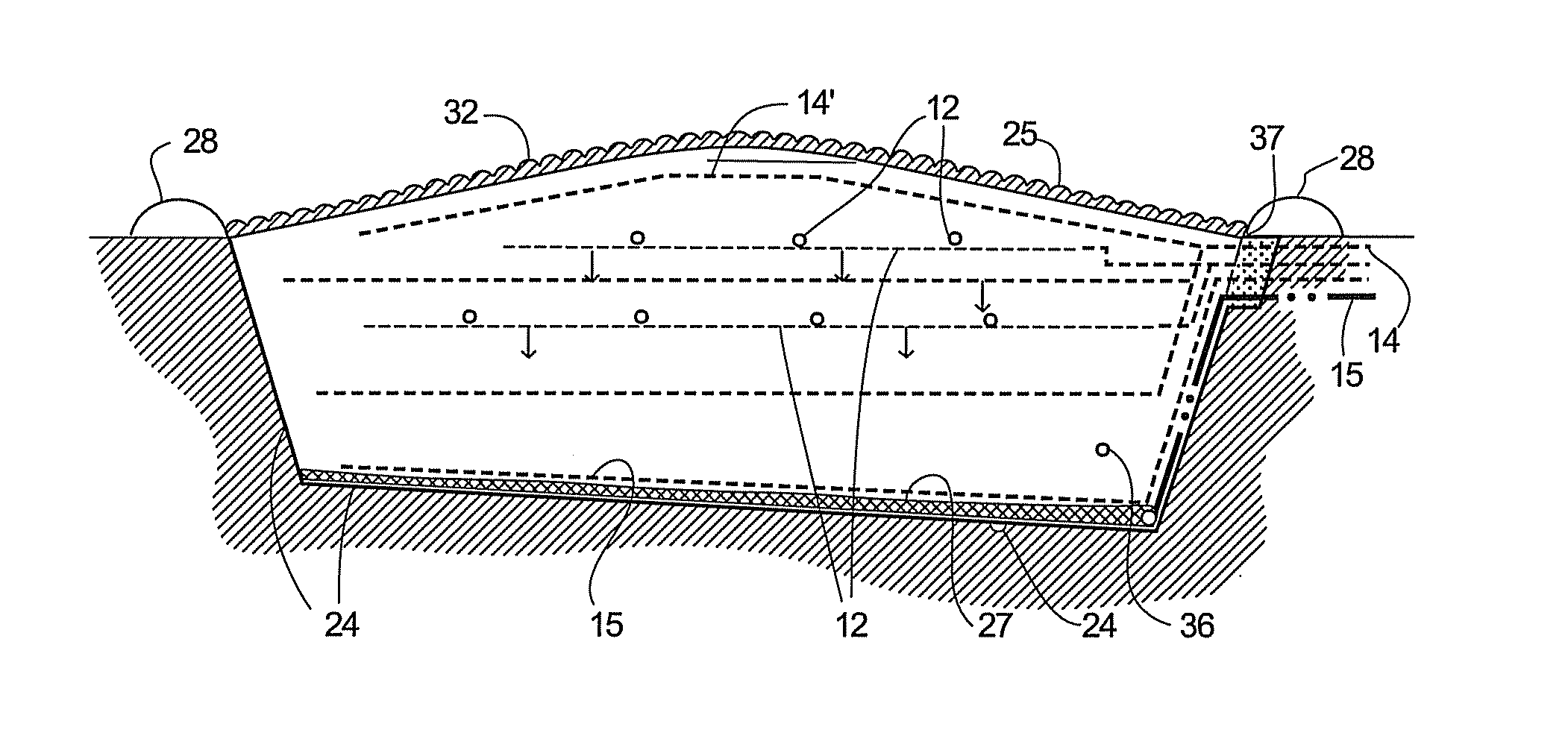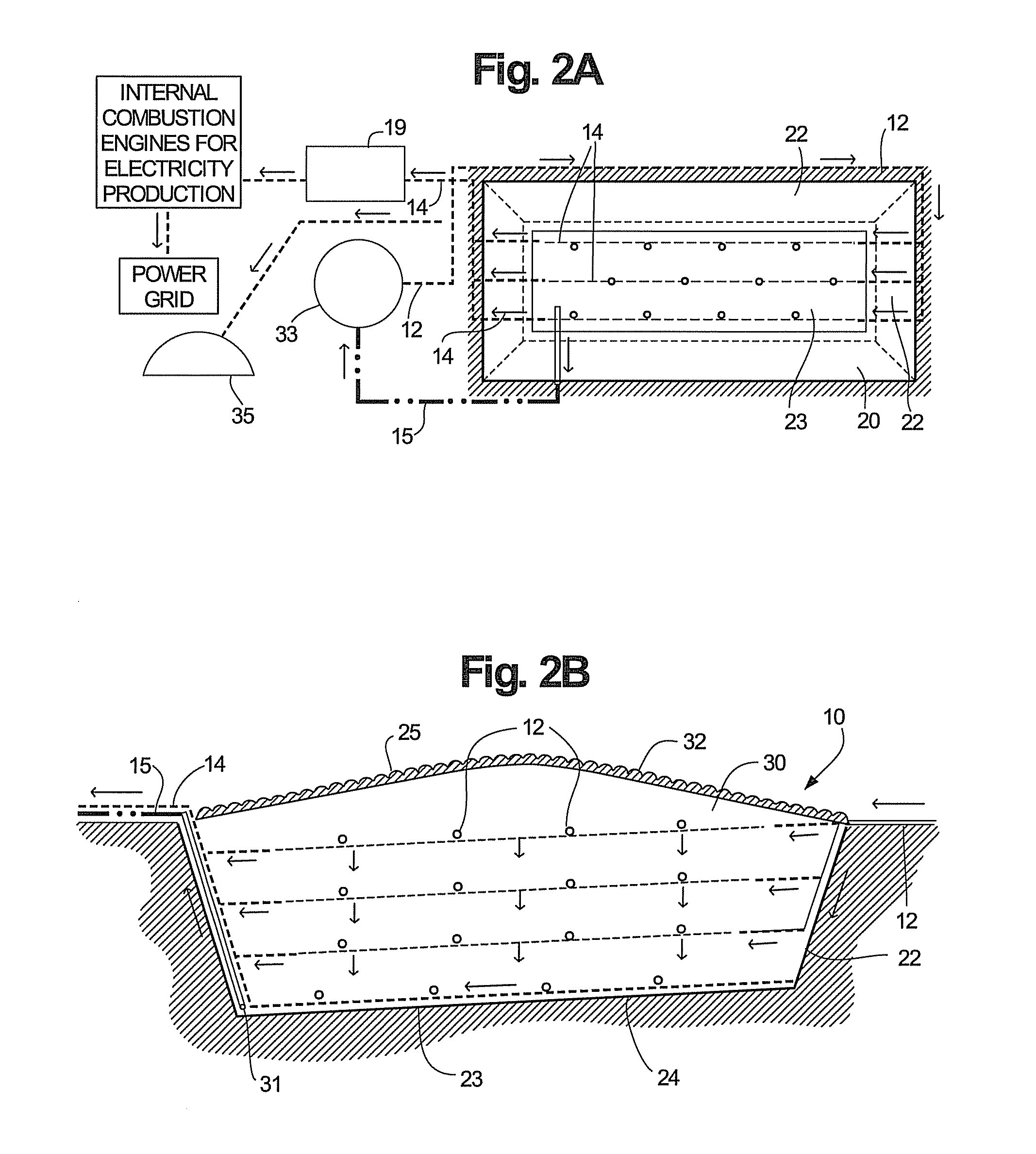In-Situ Reclaimable Anaerobic Composter
- Summary
- Abstract
- Description
- Claims
- Application Information
AI Technical Summary
Benefits of technology
Problems solved by technology
Method used
Image
Examples
Embodiment Construction
[0024]The present invention relates to an improved organics diversion system that includes one or more batch in-situ reusable anaerobic composter cells—RAC cells 10. The RAC cells 10 of this invention use flexible membrane liners as construction materials and accept and remediate shredded compostable materials. The RAC cells 10 can be used to compost any type of compostable material know in the art including, but not limited to, yard waste, manure, sludges, wood, pallets, brush, food waste, cellulosic materials like cardboard, construction waste, and combinations there of. RAC cells 10 are typically operated in a manner that produces both methane for energy and useful solid. The solids that are not fermented to form methane gas are reclaimable as digestate or compost solids. The resultant solids are useful as soil amendment, as a peat moss substitute or as compost.
[0025]In one embodiment, the RAC cells 10 of this invention are used to compost a mixture of yard waste and food waste i...
PUM
 Login to View More
Login to View More Abstract
Description
Claims
Application Information
 Login to View More
Login to View More - R&D
- Intellectual Property
- Life Sciences
- Materials
- Tech Scout
- Unparalleled Data Quality
- Higher Quality Content
- 60% Fewer Hallucinations
Browse by: Latest US Patents, China's latest patents, Technical Efficacy Thesaurus, Application Domain, Technology Topic, Popular Technical Reports.
© 2025 PatSnap. All rights reserved.Legal|Privacy policy|Modern Slavery Act Transparency Statement|Sitemap|About US| Contact US: help@patsnap.com



